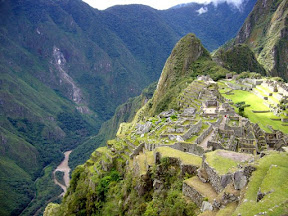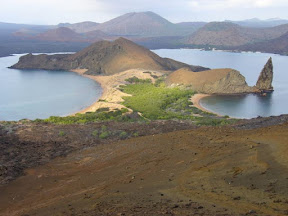Book Review of the Week: Disappearing Destinations
I am always looking for new books, especially travel books, to highlight on our site. Recently I found one that is critical to any traveler, regardless of location and destinations. It is a new book, entitled Disappearing Destinations: 37 Places in Peril and What Can Be Done to Help Save Them. Written by Kimberly Lisagor and Heather Hansen, with a forward by Pico Iyer, this book is a fascinating guide to places around the world that are important to mankind, and also are in trouble. These places - the Amazon Basin, Mount Kilimanjaro, the Yangtze River Valley, Venice, the Dead Sea, the Everglades, Yellowstone - are changing even as you read this. These two authors chose 37 of the most threatened and unique places in the world, and chose to explore them in detail - and, tell us how we can help preserve them. I was lucky enough to sit down and talk with Kimberly Lisagor...here's what she had to say:
WE: Please tell us about your book, Disappearing Destinations.
KL: Disappearing Destinations is about 37 special places that are facing imminent environmental or cultural threats. It's also about encouraging travelers (armchair or otherwise) to learn about the issues that affect these destinations and what we can do to help. Travel is so much richer when you have enough knowledge to feel emotionally invested in a place, and every destination benefits from visitors who consider themselves emotional shareholders.

Machu Piccu
WE: How did you decide to work in this area? What has been the development of this book, and website?
KL: For the past decade or so, Heather and I have written about travel and the environment, and the area where the two overlap. When the book 1,000 Places to See Before You Die came out, we thought, wouldn't it be great to write about book about places to see before they die? We started making a list of endangered places, and the more we learned, the more we felt compelled to write about it. We started endangeredplaces.com as a way to give readers updates about the places in the book and share news about endangered destinations everywhere.

Galapagos Islands
WE: Your travels to research this book must have been amazing. What were the highlights?
KL: I was blown away by the Aysén region of Chilean Patagonia. It's as pristine a place as I've ever seen, rugged and wild with very few roads connecting scattered rural villages. My husband and I met some river guides there who took us rafting on the Río Baker, at the base of the Northen Ice Field glacier. We were amazed to see them fill their water bottles with river water--no worries about contamination. Everywhere we went, we were impressed and inspired by the people who are working so hard to protect the places where they live and work.

Aysén, Patagonia, Chile - Kimberly
WE: Your focus on places in peril - and how to save them - is so important in this world that keeps growing smaller. How did you narrow it down to only 37 places?
KL: Narrowing down the list wasn't easy. We started with about 200 places, but we knew we couldn't cover that many in depth. So we aimed for a
cross-section of issues that are affecting different regions of the world. It's far from exhaustive, but it's a representation of the bigger picture. Our hope is that readers will be motivated to explore similar issues wherever else they travel.
WE: Ecotourism is becoming more popular - what do you think about that? How can people get truly involved in change?
KL: It's great to see ecotourism doing so well as travelers become more informed and eco-friendly choices become more available. I'm also encouraged by the greening of the mainstream travel industry. Some of it is greenwashing, but there is a lot of good work being done in energy and water conservation in particular. Travelers can help by supporting businesses that give back to the local communities and seek to minimize their footprint in meaningful ways. It also helps to let travel business owners know that responsible travel is important to you.
WE: What's next for you?
KL: Heather and I have gotten back to freelancing for various travel and environment magazines, and we will be contributing to an upcoming Fodor's book on ecotourism.

West Caicos Island, Turks and Caicos
WE: Is there anything else you'd like to share with us?
KL: Anyone who is interested in learning more about responsible travel should check out Sustainable Travel International (http://sustainabletravel.org/), the International Ecotourism Society (www.ecotourism.org) and Travelers' Philanthropy (www.travelersphilanthropy.org).
WE: Thanks so much, Kimberly! I appreciate both your time, and this incredible book. I read it marveling at the glory that is our earth, and also a bit of fear as to losing these glories. Appendices at the end of the book list responsible travel resources - it gives us hope, that we can make a difference.
For more information on this book, and how you can help, please see: www.endangeredplaces.com

The co-authors in Vancouver, BC
All photos provided courtesy of and copyright of Endangered Places.
-

- Log in to post comments





















Dr. Jessie Voigts
Thanks, Lexa, for highlighting this important book! I've read it, and was just utterly CHANGED by reading it.
Jessie Voigts
Publisher, wanderingeducators.com